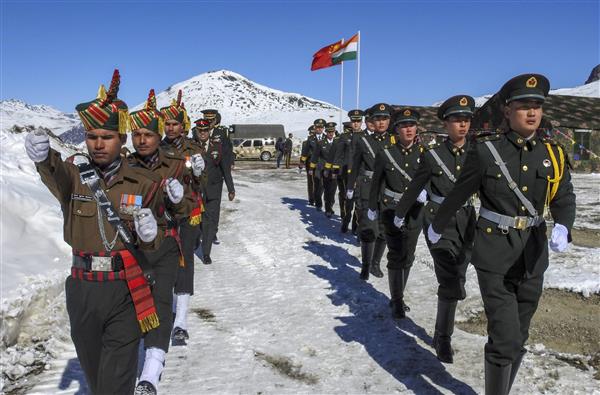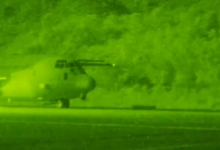This Week, India And China Held Military Talks To Discuss Airspace Violations And Provocations By Chinese Air Force

- The Chinese are only discussing boundary disputes that have arisen since May 2020 and have refused to hold talks on legacy issues.
- India and China have held 16 rounds of Corps commander-level talks to deescalate the situation and tensions that arose after the Chinese attempted to change the status quo on the LAC in 2020.
On Tuesday, India and China held a special round of military talks at the Chushul-Moldo border crossing point in Eastern Ladakh to discuss Chinese air space violations and provocations in that area over the last 45 days.
The talks took place after the Indian Air Force sternly resisted Chinese provocations in the Eastern Ladakh sector by violating airspace and the confidence-building measure lines, which require both sides to fly fighter planes within 10 kilometres of the LAC.
“During the military talks, the Indian side has strongly objected to Chinese flying activities near the Eastern Ladakh sector for more than a month now and has asked them to avoid such provocative activities,” government sources told ANI.
The talks also come at a time when China is at odds with a number of countries, including the United States, over a high-profile American visit to Taiwan and its launch of ballistic missiles into the Japanese Exclusive Economic Zone.
Air Force officers from both sides, as well as Army representatives, participated in the talks.
Air Commodore Amit Sharma from the Operations branch represented the Indian Air Force, while an equivalent rank officer from the People’s Liberation Army’s Air Force attended the discussions.
According to the sources, the Indian Army was represented by a Major General-rank officer from the Fire and Fury Corps, which was led by Lt Gen A Sengupta.
The Chinese have been complaining about the Indian Air Force improving its ability to detect Chinese Air Force aircraft operating within their territory in Tibet.
The clash between the two air forces began last week, when a PLAAF J-11 fighter aircraft flew very close to a friction point in Eastern Ladakh around 4 a.m. and was picked up by both men on the ground and radars.
The Chinese activities opposite the Chumar sector lasted more than a month, and the Indian Air Force responded strongly by scrambling its fighter aircraft, including Mirage 2000 and MiG-29s, from advance bases near Ladakh.
According to sources, the Chinese did not expect such a strong reaction from the IAF, which was prepared to take on any potential misadventure on the part of the PLAAF.
The IAF was also taking precautions during this time to ensure that there was no escalation of the situation on the ground, as well as keeping a close eye on their air activities, they said.
IAF Chief Air Chief Marshal Vivek Ram Chaudhari stated in an earlier interview with ANI a few weeks ago that “When we detect Chinese aircraft or remotely piloted aircraft systems (RPAS) approaching the LAC, we take appropriate action by scrambling our fighters or activating our systems on high alert. This has deterred them quite a bit “The IAF commander stated.
Air Force elements from both countries are now likely to be included in future talks between the two countries at the Corps Commander level.
India and China have held 16 rounds of Corps commander-level talks to deescalate the situation and tensions that arose after the Chinese attempted to change the status quo on the LAC in 2020.
Until now, the Indian side’s talks have been led by the Fire and Fury Corps Commander, with representatives from the ITBP and the Ministry of External Affairs.
The two sides have been able to resolve three points of contention in eastern Ladakh and are currently discussing solutions for the Hot Springs area as well.
The Chinese are only discussing boundary disputes that have arisen since May 2020 and have refused to hold talks on legacy issues.
The Indian Air Force has upgraded its detection capabilities along the China border in the Ladakh sector as well, but it needs to strengthen its network and coverage even more to keep a close eye on PLAAF activities near Indian territory.







Facebook Comments